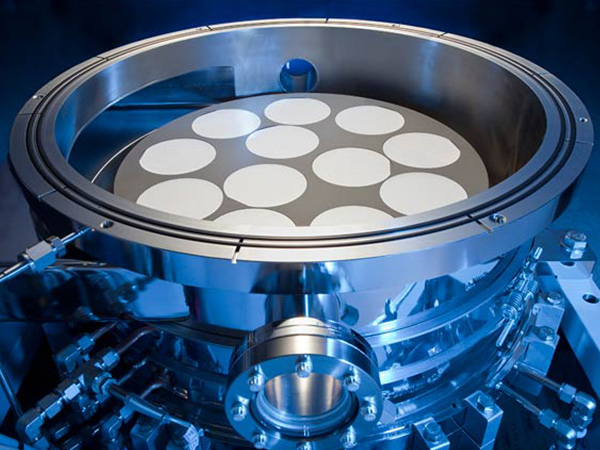According to data from the National Bureau of Statistics, the production of ten types of non-ferrous metals in China reached 6.98 million tons in August 2025, a year-on-year increase of 3.8%. The cumulative production from January to August was 54.32 million tons, a year-on-year increase of 3.1%. Among them, the production of electrolytic aluminum was 3.8 million tons, a decrease of 0.5% year-on-year, becoming the only variety with negative growth. Behind this data, it reflects the multiple impacts of industry capacity structure adjustment, market demand differentiation, and policy regulation.
1. The structural differentiation behind the overall growth
The overall growth of ten non-ferrous metals is mainly due to the driving force of copper, lead, zinc and other varieties. In the first half of 2025, Xinjiang, Shandong, and Inner Mongolia will occupy the top three regions with production of 4.8105 million tons, 4.6075 million tons, and 4.5935 million tons, respectively. The northwest region will account for 27.98% of the national production, followed closely by the east region.
The China Nonferrous Metals Industry Association pointed out that the increase in regional concentration is closely related to the industrial transfer strategies of “North Aluminum Southward Movement” and “West Mining East Refining” – the transfer of electrolytic aluminum production capacity from Shandong to Yunnan and the completion of capacity replacement in Qinghai, promoting the aggregation of the aluminum industry chain towards clean energy enrichment areas.
2. Deep reasons for the slight decrease in electrolytic aluminum production
The 0.5% year-on-year decline in electrolytic aluminum has attracted market attention. Analysis shows that in August, two large aluminum rod factories in Shandong Province experienced a shortage of aluminum water supply due to the transfer of electrolytic aluminum production capacity.
Gansu, Guizhou and other places reduced production due to technological upgrades and insufficient orders, directly lowering national production. At the same time, the supply of alumina presents a pattern of “surplus in the north and shortage in the south”: the release of new production capacity in the north has increased daily production by 2900 tons, while in the south, due to the expansion of electrolytic aluminum production and delayed production of new alumina production capacity, spot supply remains tight.
According to estimates, there was a surplus of 255200 tons of alumina supply in August, but regional shortages caused fluctuations in local market prices.
3. Resonance between emerging industry demand and policy regulation
The demand for copper and aluminum in the fields of new energy vehicles and photovoltaics continues to rise. In the first half of 2025, refined copper production was 7.363 million tons (a year-on-year increase of 9.5%), and electrolytic aluminum production was 22.379 million tons (a growth of 3.3%), mainly due to the increase in materials used for power batteries and photovoltaic frames.
At the same time, the policy side continues to tighten the supply side: the “Rare Earth Management Regulations” implemented in 2024 will include imported minerals in the total quantity control, and the Ministry of Industry and Information Technology will further regulate capacity replacement in August 2025.
It is expected that the scale of non compliant capacity clearance for the whole year will exceed 30%. This trend of “demand expansion+supply contraction” has pushed the price center of copper, aluminum and other varieties upward.
4. Macroeconomics and Industry Resilience
Although the US manufacturing PMI fell to 48% and the European economic recovery was weak, the Asian manufacturing PMI remained in the expansion range of 50.5%, becoming an important support for global demand for non-ferrous metals. Domestically, the manufacturing PMI rebounded to 49.4 in August, with a production index of 50.8 indicating that industrial production resilience remains strong.
Nonferrous metal enterprises improve efficiency through technological transformation and full industry chain layout – Zijin Mining’s copper production increased by 9% and gold production increased by 16% in the first half of the year, with a gross profit margin of 38.6%; Shengtun Mining’s energy metal business revenue was 9.187 billion yuan, with a gross profit margin of 27.17%, highlighting the industry’s trend towards transforming into high value-added fields.
5. Future challenges and opportunities
Looking ahead to the future, the replacement of electrolytic aluminum production capacity will continue until the end of 2025, and the resumption of production capacity in Guangxi, Yunnan and other places may alleviate local shortages. But we need to be vigilant about the impact of overseas mining resumption progress and breakthroughs in recycling technology on the supply pattern.
At the same time, macroeconomic factors such as rising expectations of interest rate cuts by the Federal Reserve and a slowdown in global trade growth to 1.8% may exacerbate price volatility. Industry leaders such as Aluminum Corporation of China and Jiangxi Copper Industry are building long-term competitiveness through overseas mineral layout and high-purity metal research and development to meet the demand for green transformation under the “dual carbon” goal.
Post time: Sep-19-2025






